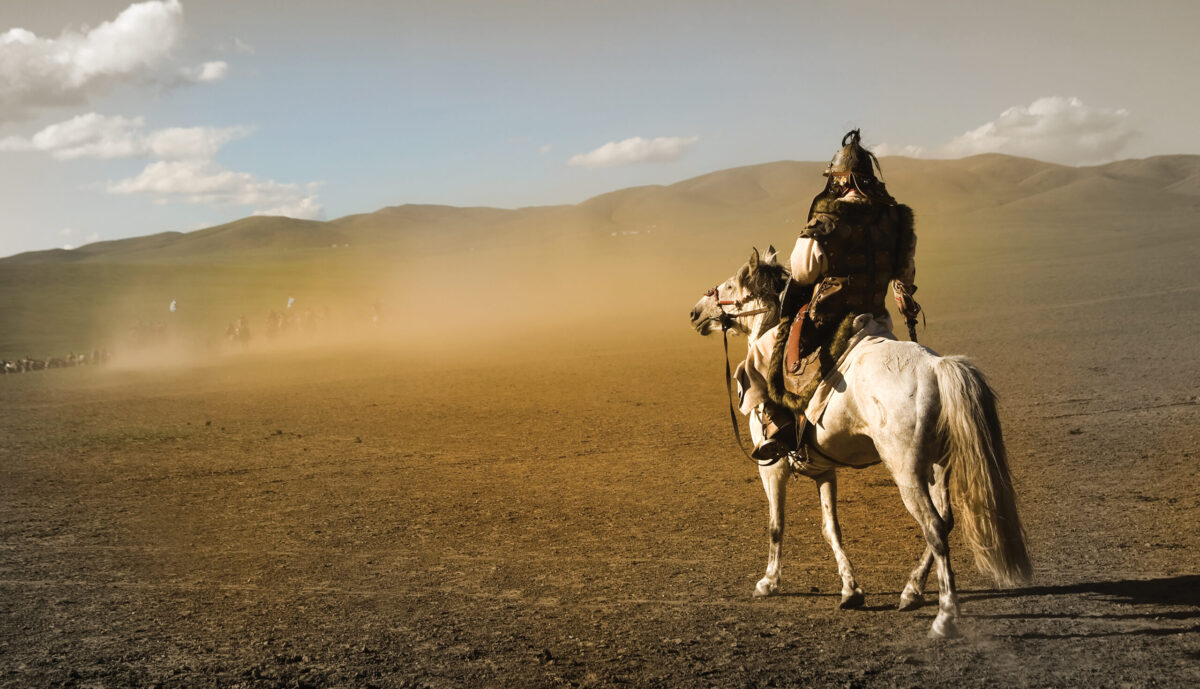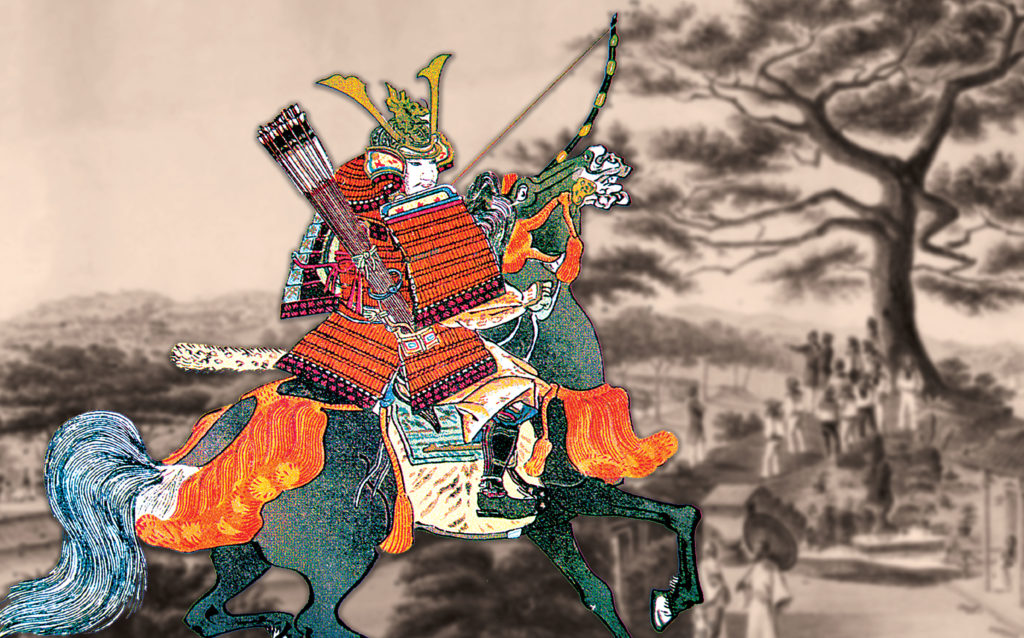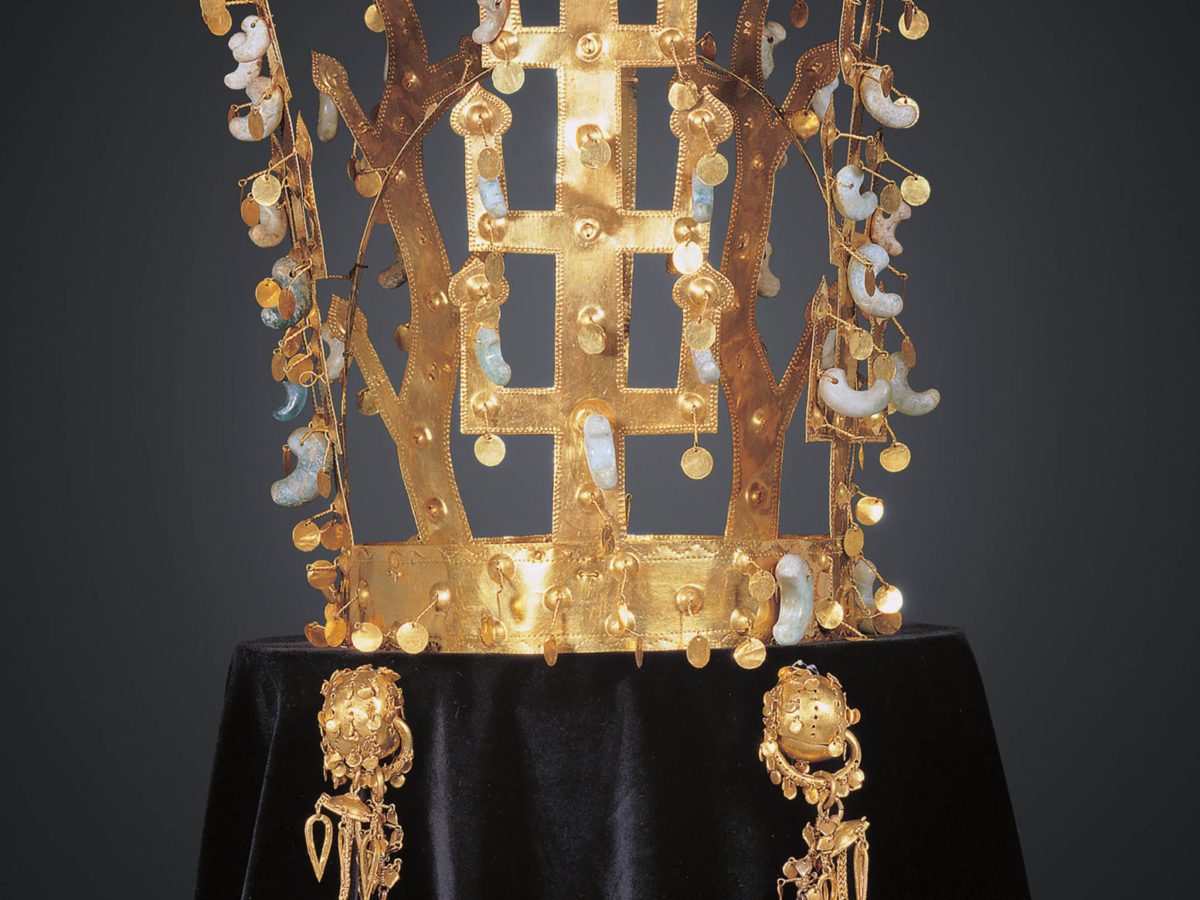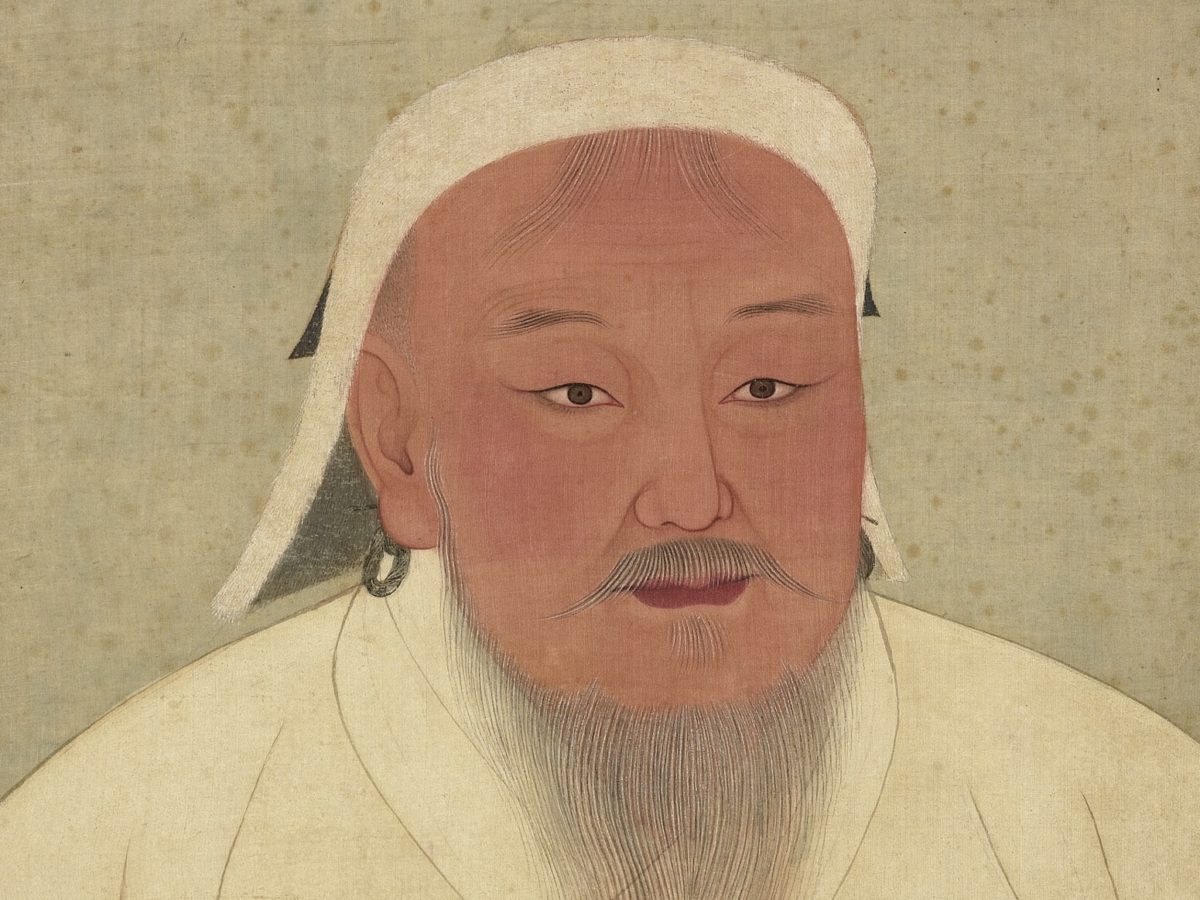In December 1232 a.d., a single arrow changed the course of history. Loosed by a Buddhist monk, the missile struck down the leader of the second Mongol invasion of Korea. His death precipitated a lifting of the siege of Cheoin and subsequent Mongol withdrawal from Goryeo. Yet they wouldn’t be gone for long. The extended nightmare that characterized Mongol attempts to subdue the Korean kingdom was destined to continue for a generation.
The geopolitical environment of Northeast Asia in the early 13th century would be recognizable to us today. Multiple, militarized states in a relatively compact area shared diplomatic, military, and trade relations. However, the identity of the regional powerhouses at the time is different from our modern construct.
China was divided. In 1127 a confederation of Jurchen tribes had seized control of northern China, later known as Manchuria. To their south, the Jurchen faced what remained of the Chinese Song Dynasty, known today as the Southern Song. The Jurchen proclaimed the establishment of a “Great Jin” Dynasty. Fighting with the Chinese continued until a line of unassailable fortified Song cities along the Huai River forced a stalemate. This resulted in a cessation of Jin-Song hostilities in 1138 and the formalization of a new border.
Genghis Khan On the Rise
The war between the Jurchen and the Chinese couldn’t have come at a worse time. In 1206, far to their north, an aggressive and ambitious Mongol chieftain was declared Khagan, Emperor of the Mongols. Genghis Khan—whose name meant “Universal Ruler”—wasted no time in turning the energy of the newly-unified Mongol and allied steppe tribes toward external foes.
Genghis Khan launched his invasion of the Jin Empire in 1211 and, by 1215, he’d taken the capital at Zhongdu (modern Beijing). Distracted by events further to the west, Genghis Khan left a force to keep the pressure on the Jin while he himself marched off to destroy the Qara Khitai (in central Asia north of the Indian subcontinent) in 1217. He then smashed the prosperous Khwarezmid Empire (a Muslim empire that included present-day Iran, Afghanistan and central Asia) in 1221.
Genghis Khan died in August 1227, leaving a massive empire in the hands of his very capable third son, Ogedai, who was formally recognized as khan in 1229. When Ogedai led an army back to Jin lands the following year, his veteran troops made short work of the remaining resistance. Aizong, the last Jin emperor, hanged himself to avoid capture, ending that dynasty in 1234. Having toppled the Jin Empire, the conquerors would soon turn their attention to the Song.
Throughout this tumultuous period the Korean kingdom of Goryeo bided its time. Goryeo had been founded through military conquest in 918. A hereditary military aristocracy held significant, if declining, influence at court. Martial clout reached its peak in 1170 when the military usurped the king’s authority. The aristocracy established a dictatorship that would last a hundred years, ruling in the king’s name but holding near-absolute power.
Swords and Scholars
In keeping with the nature of its founding, Goryeo maintained the greatest military capability of any Korean polity until the 20th Century. Goryeo troops were, at the beginning of the 13th Century, highly trained, well-equipped, battle-hardened, and well-led by the military aristocracy.
The sword arm of Goryeo was augmented by a rising class of Confucian scholars who provided sage advice to the royal family and a well-educated pool of wily diplomats. This scholarly class found itself increasingly at odds with the established military aristocracy and dictatorship, though powerless to resist the dictator’s private army. The intellectuals waited patiently for an opportunity to challenge what they saw as an illegitimate usurpation of the throne.
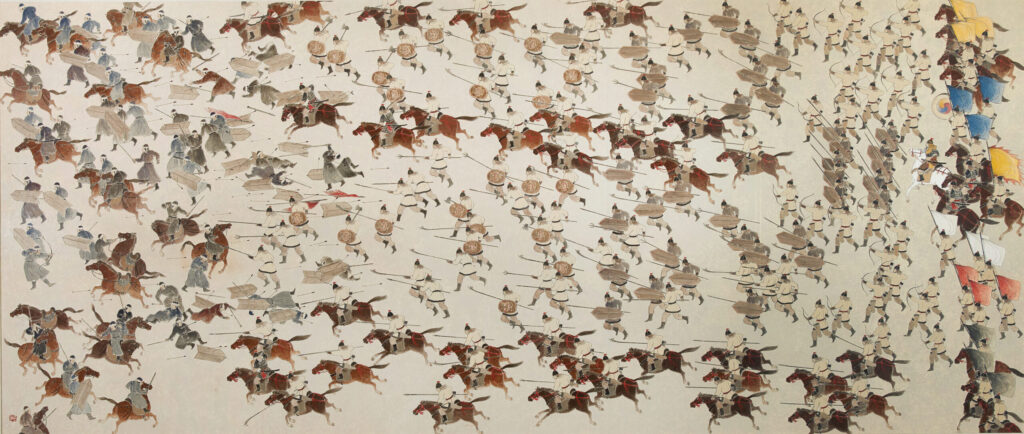
Fissures aside, the Goryeo court wielded its key elements—the quill and the sword—with admirable dexterity. The kingdom exhibited phenomenal ability to rapidly concentrate and project coercive power. This approach facilitated a multi-pronged expedition against the Jurchen in 1107, which seized massive tracts of land from the semi-nomadic tribes. This campaign set the conditions for a pledge by the Jurchen Wanyan tribe—the same tribe that would establish the Jin Dynasty eight years later—not to encroach upon Goryeo territory.
The annals show Goryeo’s leaders recognized the Mongol storm on the horizon. A number of factors made it seem like a distant problem at first. Korean kingdoms had long fended off mounted Jurchen incursions along the border, launching their own attacks north when timing and local advantage were favorable. To the Goryeo the Mongols were nothing more than another group of barbarians on horseback.
Yet it was the handling of the Khitan Liao incursions of the 11th Century wherein the Goryeo playbook for dealing with the Mongols would be written. Throughout the course of three invasions in 993, 1010, and 1018, Goryeo’s armies fought viciously until conditions rendered further resistance undesirable. The king would then sue for peace—ensuring any terms included the withdrawal of the invading force—buying time to reorganize for the next campaign before resuming the conflict.
The best example of this Goryeo sword-and-quill tactic, an admirable early synthesis of military and diplomatic efforts, led to the Battle of Guiju during the third Khitan invasion in 1019, and the annihilation of a 100,000-strong Khitan army in the mountains of modern North Korea. Goryeo would employ this same strategy, with notable success, against the Mongols.
Korea, an Unlikely Contender
Recommended for you
Given what we know of the Mongol conquests, it might appear unbelievable that the tiny Kingdom of Goryeo would even consider resisting. The khan’s armies subdued China, Khwarezm, and Persia before invading Russia and Eastern Europe. Goryeo, however, was fiercely protective of its independence and had successfully defended itself against innumerable invasions, generally punching well above its weight class.
Goryeo’s leaders long understood their greatest advantage lay in the peninsula’s geography. Broad rivers guarded the northern border. Fortified mountain ranges separated by disease-infested valleys loomed over the route to the capital at Kaeseong. That rugged terrain had swallowed up invading armies throughout Korea’s long history. There was no reason for King Gojong to think it wouldn’t continue to do so.
Regardless of the strength of the kingdom’s defenses—both natural and man-made—the court closely monitored burgeoning Mongol power. Goryeo also extended efforts to maintain an amicable relationship with the Mongols—Koreans and Mongols even joined forces in 1219 to destroy a pillaging army of Khitans which had crossed Goryeo’s northern border.
In 1224 the inevitable occurred. A Mongol envoy arrived at the Goryeo court in Kaeseong and demanded tribute. Goryeo’s military dictator at the time, Choe Woo, refused. The emissary departed. While enroute home, the envoy was killed by bandits. The Mongols labeled the unfortunate event treacherous, and it became a pretext for invasion. It was Goryeo’s turn to face the all-conquering armies of the Great Khan.
The Korean Peninsula is only about 760 kilometers (450 miles) from the Yalu River to Busan (formerly known as Pusan). Given that the Mongols were at that time fighting successfully as far away as the Persian Gulf and Russia, one might expect the subjugation of such a small nation to be simple. That turned out not to be the case.
The First Invasion
The first invasion took place in August 1231 under the command of the Mongol general Saritai. This force crossed the Yalu and quickly moved south, overrunning the border town of Uiju. The Mongols then took the city of Anju but failed to breach the walls of Kuju, despite numerous attempts. Already tiring of siege warfare, Saritai bypassed the strongpoint, marching hard to the south and seizing the capital of Kaeseong. Goryeo sued for peace and accepted the installment of 72 Mongol administrative officials. Saritai, no doubt reveling in the accomplishment of his mission, turned the army north and in short order departed the kingdom.
In 1232, Choe Woo fortified Ganghwa Island, west of modern-day Seoul, stocked it with ample provisions, and ordered the construction of all the facilities required by a fully functioning royal court. The dictator then evacuated the entire Goryeo government to Ganghwa, eliciting instant suspicion among the Mongol administrators. With that move—taking advantage of Mongol maritime weakness—Choe set the conditions for a stubborn resistance.
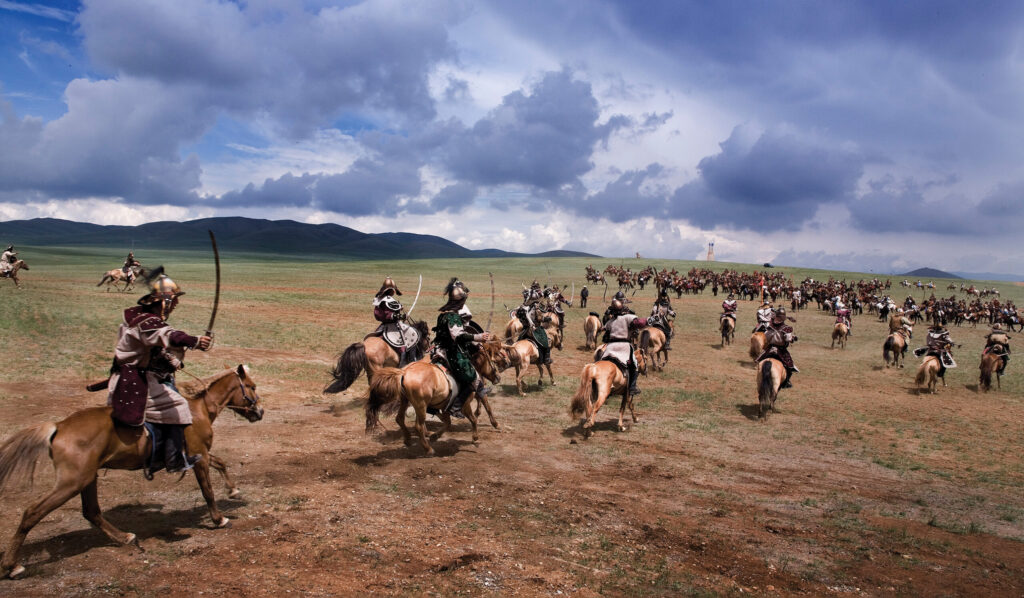
Choe instructed the people to take refuge in the many fortresses scattered throughout the countryside. Once the population was safe, he had the Mongol administrators killed. When word reached Saritai, he turned his army southward again and began the second invasion of Goryeo in June 1232.
Saritai failed in a half-hearted attempt to reach Ganghwa Island—less than a mile off-shore—and commenced the siege of Cheoin near modern Yongin. It was there that the monk Kim Yun-hu, chosen by the locals to lead their defense, struck down Saritai with an arrow in December. His death caused the Mongol army to withdraw from Goryeo, ending the second invasion.
In July 1235, the Mongols returned. Frustrated by Goryeo’s willingness to retreat within city walls and high mountain fortresses, the invaders settled upon an age-old strategy: scorched earth. If the inhabitants wouldn’t defend their lands, they’d lose them. The new plan involved massive, roving bands of Mongol cavalry, burning and pillaging their way well south of the Han River.
On the rare occasion when the Mongols took a fortified site, they massacred the inhabitants. Yet civilian resistance remained strong behind stout fortifications. The Mongols suffered several setbacks as Korean forces trapped and annihilated isolated groups of marauders.
The Mongols Retreat
After years of wanton destruction punctuated by sporadic military engagement, Choe sued for peace in 1238. The Mongol demands included a requirement for the Goryeo court to return to Kaeseong and for a prince to be sent to the khan to live as hostage. Instead, Choe fooled the Mongols by sending an unrelated member of the royal family—an act which, discovered years later, enraged the invaders.
By 1247, the Mongols realized that the endless excuses Goryeo offered as to why the government had yet to return to Kaeseong were just that: excuses. Choe was not about to place the court back within striking range of Mongol forces. This led to a fourth invasion that July, carried out in much the same way as the previous one.
The people fled to local fortifications and once again took up arms while the Mongols burned anything and everything they found, killing or enslaving those hapless enough to be caught outside the walls. This time, neither cities nor fortresses were successfully taken, and the campaign ended in 1249 after Mongol emperor Guyuk Khan, Ogedei’s eldest son, had passed away in April 1248, causing the army to return home.
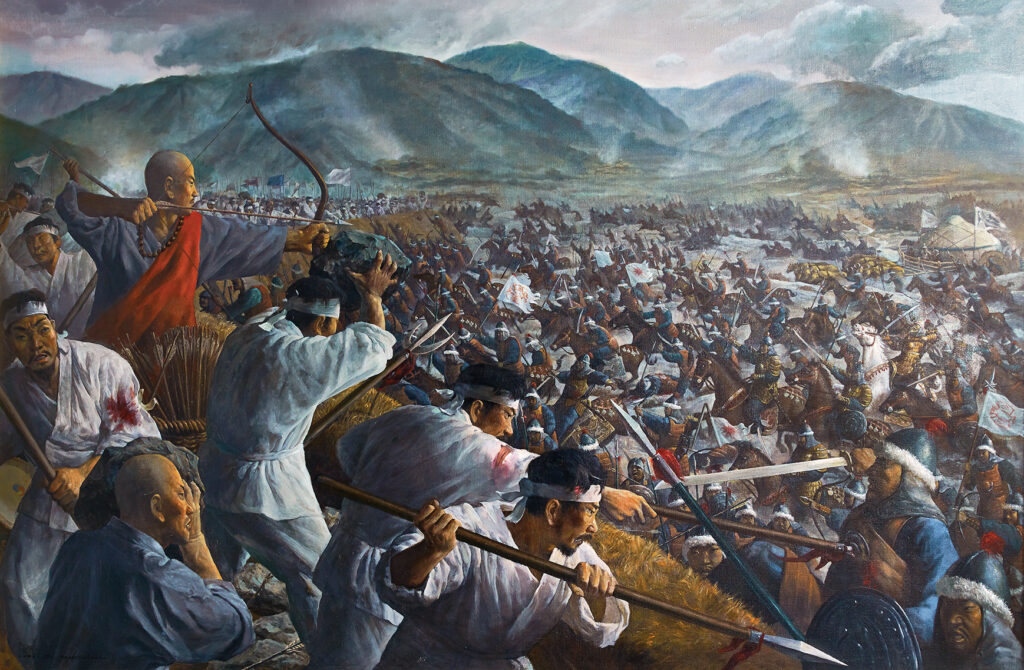
With Mongke Khan’s ascension to leadership, the Mongols renewed their demands upon Goryeo in 1251. Receiving the by now familiar excuses, the Mongols invaded a fifth time in July 1253, ravaging the empty countryside. This time, however, Goryeo had lost its most intractable advocate for resisting the invaders. Choe Woo had abruptly died of an unspecified disease in December 1249, handing dictatorial powers to his son, Choe Hang.
Compared to his father, Choe Hang held much less control over the royal family, as the annals make clear King Gojong himself met with Mongol envoys to arrange a cease-fire in early 1254. The king agreed—once again—to move his court back to the mainland.
By summer that same year, the Mongols learned that not only were multiple high-ranking officials still resident on Gangwha, but that the king’s stepson hostage wasn’t even from the royal line. There were also rampant rumors that Goryeo officers who’d cooperated in any way with the Mongols had been executed. For the Mongols this was the last straw. They set out in July 1254 to punish Goryeo.
Famine
After so many years of constant warfare and pervasive destruction, famine gripped the kingdom. The people were reaching their breaking point. Civilians surrendered to the invaders in ever increasing numbers. This latest incursion introduced the most widespread havoc to date and resulted in more than 200,000 people taken as slaves. The Mongol army marched their captives north, ending the sixth invasion that December with no political resolution at all.
Growing frustrated with the situation, the Mongols again switched tactics. By this time they’d abducted a large number of Goryeo subjects and, in the same manner employed elsewhere, set out to find those with useful skill sets. Thus, in 1255 the Mongols launched seaborne raids along the coast in ships built by captured Korean craftsmen.
Intent upon taking Gangwha from the sea, intervention at the Mongol court by a Goryeo diplomat, Kim Su-gang, convinced Mongke Khan to cease the effort and recall his army. This ended the seventh invasion in June 1256 but, again, without any permanent resolution.
A much debated eighth invasion in 1257, played out almost the same way, with an impending assault on Gangwha interrupted by diplomacy and the khan’s recall of Mongol forces. However, Choe Hang died in May 1257, passing the mantle of dictatorship to his son, Choe Ui. The 25-year-old dictator held even less power than his father over the Goryeo monarch. Most decision-making appears to have been pried from his inexperienced hands.
In response to renewed hostilities in 1258, the king’s civil advisers—slowly gaining the upper hand over the military aristocracy—recommended sending the crown prince to the Mongols as a hostage, per the invading commander’s request. Unsatisfied with waiting for King Gojong to make his decision, the Mongols took Sinui and Changnin islands off the southwestern coast, their first amphibious successes. Still, a strong Goryeo fleet prevented the Mongols from making a proper run at Gangwha. Mongol coastal operations ceased with word that Mongke Khan had once more recalled the army. Goryeo diplomacy had once again purchased more time. The king’s Confucian advisers were intent to make the most of it.
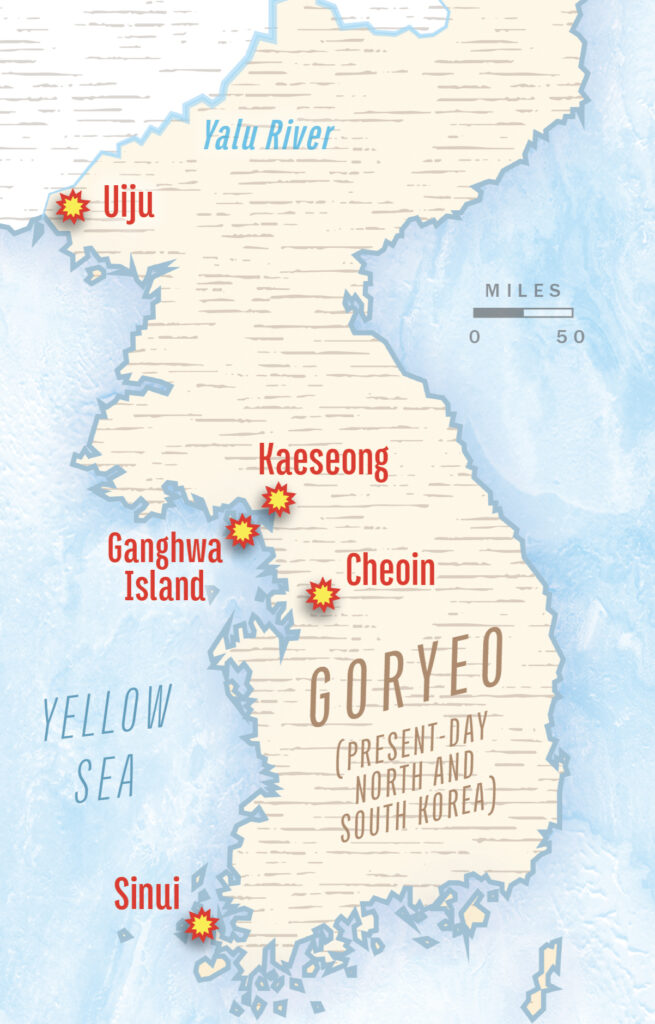
A coup against the Choe family the next year resulted in the death of Choe Ui just two years into his dictatorship. This left Goryeo’s royal family with more authority than it had held in many years. Heeding the scholars’ advice, the king struck a peace treaty with the Mongols.
But time was not on Gojong’s side. He passed away in 1259, succeeded by his son Weonjong. Despite treaty obligations, it would be 11 years before the redoubtable fortifications protecting Gangwha Island would be torn down and the court returned to Kaeseong. Following the coup, the private army that had kept the Choe family in power for nearly 60 years fled the capital. Its leaders attempted to create their own state along the southern coast, unwilling to the very end to submit to Mongol rule. This elite force—fueled by an unquenchable need to resist Mongol domination—managed to hold out against repeated attacks for another 14 years. Their last stand took place on Jeju Island in 1273, where they were finally crushed—ironically, by a combined Goryeo-Mongol force.
Political Independence
Goryeo maintained its political independence, a true rarity among those peoples who dared to defy the will of the Great Khan. The terms of the treaty were relatively lenient—reflecting that the Mongols had been worn down after dispatching so many armies down the troublesome peninsula. However, Goryeo was required to pay an annual tribute and the king was forced to marry a Mongol princess, tying the royal families together. In this way, Goryeo received the status of a Mongol ally. The kingdom’s henceforth Confucian-trained rulers would take their alliance obligations seriously.
The first and most important reason for the difficulty the Mongols experienced in Korea was the geography of the peninsula. That preceding Korean dynasties and kingdoms had fortified every advantageous height or narrow defile from the Yalu River to the southern coast only magnified those natural defenses.
Topography didn’t turn out to be quite the obstacle to the Mongols that it had been for so many invading armies throughout history. This is most likely due to the speed with which Mongol forces pressed their advance. An army passing through at the speed of horses spends far less time in malaria-infested lowlands than one moving at the speed of infantry, thereby reducing its vulnerability. Whatever the cause, the annals fail to mention Mongol losses from disease and related attrition inflicted upon other historical invaders.
On the other hand, Goryeo fortresses, often constructed high above the surrounding lands and incorporating natural defenses, proved difficult for the Mongols to access, much less assault. Even with professional siege engineers brought from distant lands, siege equipment had to be hauled or pushed up steep slopes, under withering bow fire, just to reach the fortress walls. This was never easy. Many Mongol warriors lost their lives in fruitless sieges like the one at Sangju where 50 percent of the besiegers were reportedly slain before the siege was lifted.
The evacuation of the court to Gangwha proved genius. It removed a vulnerable pressure point as effectively as if the government had fled to the Moon. The Mongol inability to assault that small island, so tantalizingly close to the mainland, highlights a very real gap in an otherwise profoundly dominant military organization.
The Mongol difficulty in storming the mountain fortresses, or even reaching Goryeo’s offshore strongholds, helps explain why from the third invasion (1235) onward the steppe armies generally refrained from siege activities, concentrating instead on starving out an entire nation. The invaders would eventually try their hands at amphibious warfare, but that capability would never be something the Mongols would bring to maturity, relying instead upon the navies of subjects and allies.
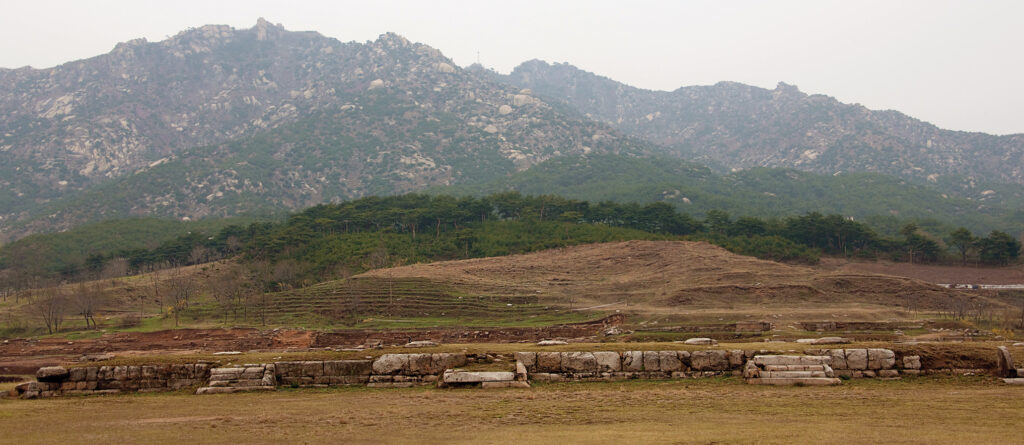
The Goryeo armed forces at the beginning of the Mongol invasions consisted of a large, centrally controlled army augmented by private armies made up of highly skilled professional soldiers under the command of the military aristocracy. These conventional forces, however, could not stand up to the Mongols in a set piece battle. No shame there, of course, as they found themselves in good company with armies as far away as China, Persia, and Poland.
Goryeo’s unique solution to the problem of losing field battles against the Mongols was to quit fighting those engagements. Both the central army and the private ones broke down into smaller, more maneuverable, “patrols” scattered across the kingdom. This distributed approach sought to stiffen local civilian resistance and, wherever possible, ambush separated or unwary Mongol bands. The approach proved successful for Goryeo. It helps explain why the most victorious military organization to that point in history found it so hard to decisively crush the tiny Korean state.
With the destruction of the military aristocracy, the inhabitants of Korean settlements came to understand they had to defend themselves—though their king would assist when and where he could. This development underpins the rapid rise and incredible effectiveness of Joseon Era guerrilla armies, which sprang into action following the Japanese invasion of 1592. Simply put, the populace was by then well-armed and conditioned to join the fight, a mindset borne out of necessity during the protracted Mongol assault on their homeland.
Diplomacy and War
Finally, Goryeo’s well-coordinated use of alternating diplomacy and warfare served it well. It provided breathing space when necessary and extended the resistance of an army and people that should have—from the Mongol perspective—quit fighting long before. This appears to have been an approach the invaders either didn’t truly understand or to which they couldn’t adapt. In the end, however, the Mongol solution proved every bit as Machiavellian as the diplomatic-military sword wielded by Goryeo. If the kingdom refused to come out and defend its fields, the Mongols determined there would be no fields, and thus, no food. Over time, this brutal, protracted assault on the citizenry was a war-winning strategy. In the end, Goryeo survived the Mongol tempest. Peace returned to the peninsula and the Pax Mongolia allowed reconstruction of the damage done.
As well, when the last anti-Mongol forces were snuffed out in 1273, the scholarly class of bureaucrats found they had once and for all established dominion over the military aristocracy. From this point on, for better or worse, Korean kingdoms would be dominated by Confucian scholars.
Goryeo took to its new role in the order of Northeast Asia with gusto, obeying Kublai Khan’s command to facilitate the Mongol invasion of Japan. This led to a pair of attempts in 1274 and 1281, both of which failed in part due to the arrival of typhoons which scattered the first fleet and wrecked much of the second. By 1389, with pirates preying on the kingdom’s coastal communities, Goryeo executed a successful amphibious raid on Tsushima Island, burning several hundred pirate vessels and freeing more than 100 Koreans held captive there.These expeditions were, however, the last gasp of Goryeo’s military power.
The strength of the Korean military aristocracy was broken on the battlefield by the Mongols and at court by Confucian scholars. Those tough-as-nails military families—representing the traditional martial vitality of the Korean people—would be missed in future conflicts. The succeeding Kingdom of Joseon would pay dearly for their political emasculation.
Most importantly, the Kingdom of Goryeo—and the Korean people—survived a 40-year war of resistance against the fearsome Mongols. This was a result that several, much larger and stronger empires had failed to achieve and remains a point of national pride for Koreans today.

